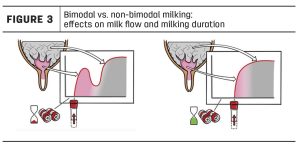Chapin was awarded the National Milk Producers Federation Communicator of the Year award. He received his award for his work advocating for producers in the FMMO pricing changes as well as Michigan’s HPAI response.
These dairy pricing policies come after a 49-day national hearing held between Aug. 23, 2023, and Jan. 30, 2024, in Carmel, Indiana. During the hearing, testimony and evidence were presented on 21 proposals aimed at modernizing FMMO pricing formulas. Following the hearing, AMS issued a recommended decision on July 1, 2024, initiating a public comment period that drew 128 responses.
A final decision was published on Dec. 2, 2024, this gave producers 11 FMMO amendment changes to vote on approval. As a part of USDA all or nothing voting rules, unaccepted amendment changes would result in the amendment being removed.
However, this stipulation didn’t occur as producers nationwide approved all 11 amendments. Some of the amendment changes overlap each other, listed below are the five key changes:
Updating the skim milk composition factors to 3.3% true protein, 6% other solids and 9.3% nonfat solids.
Removing 500-pound barrel cheddar cheese prices from the Dairy Product Mandatory Reporting Program survey.
Updating the Class III and Class IV manufacturing allowances to $0.2519 for cheese, $0.2272 for butter, $0.2393 for nonfat dry milk and $0.2668 for dry whey, all on a per pound basis, and the butterfat recovery factor to 91%.
Returning the base Class I skim milk price formula to the higher-of the advanced Class III or Class IV skim milk prices for the month. In addition, adoption of a Class I extended shelf life (ESL) adjustment for all ESL products equal to the average-of mover plus a 24-month rolling average adjuster with a 12-month lag.
Updating the Class I differential values to reflect the increased cost of servicing the Class I market.
Class I dairy products represent ones where milk is used for various beverages. Class II dairy products are ones where milk is used for soft products such as ice cream, yogurt, etc. Class III dairy products are ones where milk is used in the manufacturing of cream cheese & other spreadable cheese, and hard cheeses. Class IV dairy products are ones where milk is used to produce butter.
Chapin feels these changes were playing catch up and hopes the recent changes will prompt more frequent updating of pricing policy.
“This process was really a modernization of what we already had. It’s important to note that we have not made changes since 2000,” Chapin said. “In those 25 years, there’s been significant changes in the cost of making and moving dairy products. and those are a couple of the key elements that really affect the formula. This modernization going forward give us the ability to keep up with the times and to be able to adjust every few years.”
Chapin doesn’t expect these changes to affect producers much if at all, he believes the change will be all on AMS’ side. He also doesn’t believe that consumers will feel much of a change. The biggest change will be felt in Class 1 pricing; however, Class 1 pricing is already the most volatile.
All amendment changes will go into effect June 1 except for the milk composition price, which changes will take effect on Dec.1.
You can now read the most important #news on #eDairyNews #Whatsapp channels!!!
🇺🇸 eDairy News INGLÊS: https://whatsapp.com/channel/0029VaKsjzGDTkJyIN6hcP1K



















